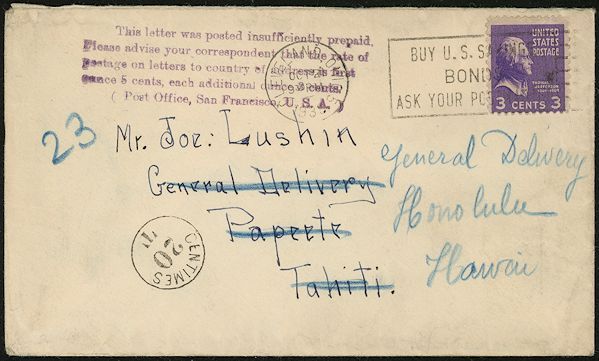
The Three-cent Prexie
First class use
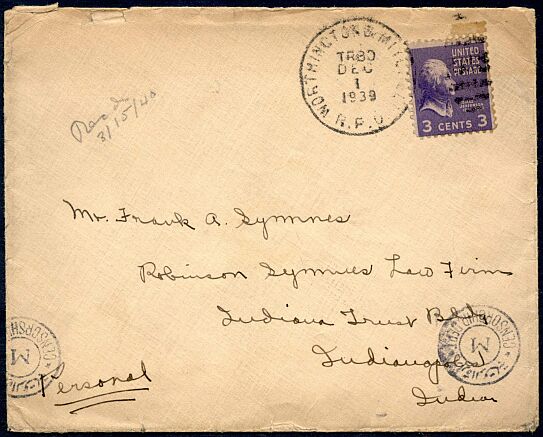
The first class letter rate was three cents per ounce from July 6, 1932 until August 1, 1958.
This letter was postmarked on a Railroad Post Office in South Dakota. Sent to Indianapolis, Indiana in 1939, it took three and a half months to get there. Someone in the post office apparently ignored the third and fourth lines of the address and, reading the poorly written name of the state, sent it to India. It was censored in Egypt en route, and returned from there.
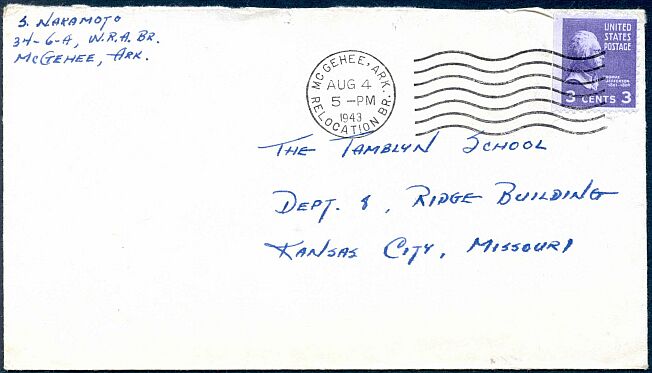
A three-cent booklet stamp used on a cover sent from one of the relocation camps inside the United States during World War II.
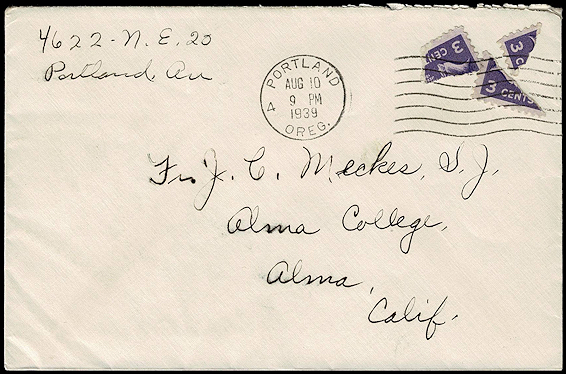
A letter sent using lower left parts of three different three cent stamps. Surprisingly, the post office allowed this.
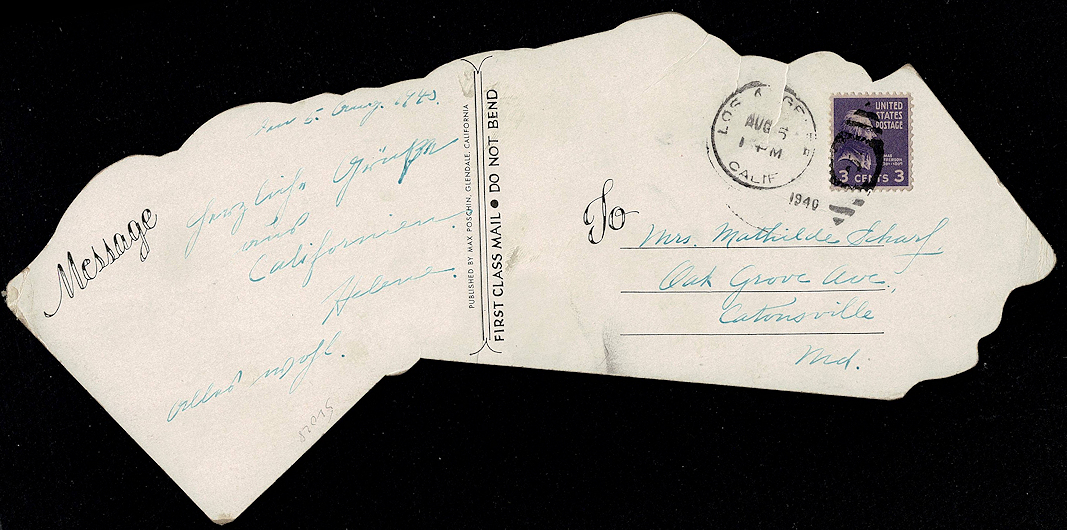
Postcards over a particular size required first class postage. This one, mailed in 1940, ran into that rule by measuring over five and 9/16 inches in length.
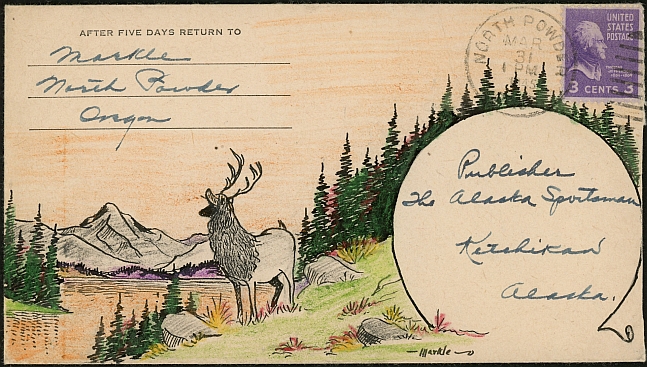
The same first class rate applied to surface mail sent to, from and within territories and possessions. This handpainted cover was sent from Oregon to Alaska, probably offering to do illustrations for the Alaska Sportsman.

Mail could be sent from APO's to U.S. addresses at the domestic rate. This cover was mailed by a civilian at APO 15, Sangmudai, Korea, which was only open from February 20, 1954 through August 24, 1955.
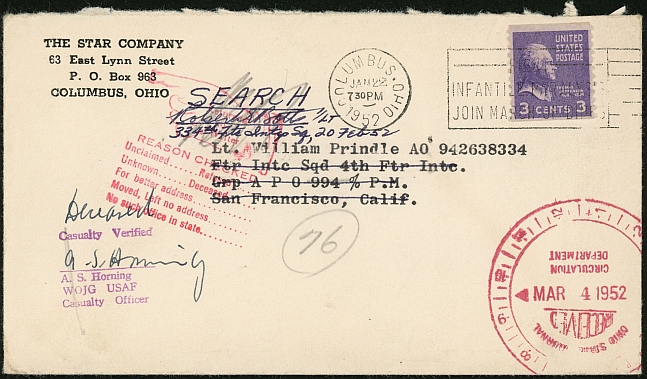
Mail could also be sent to military addresses at the domestic rate. This cover was mailed to an Air Force F86 pilot serving in the Korean War, not knowing that he had been killed in action several weeks before.
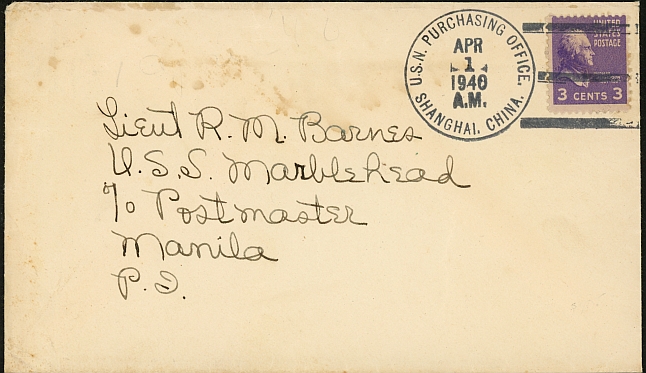
The domestic rate also applied to mail sent from one military address outside the U.S. to another. This cover went from the U.S. Purchasing Office in Shanghai to a naval lieutenant in Manila.
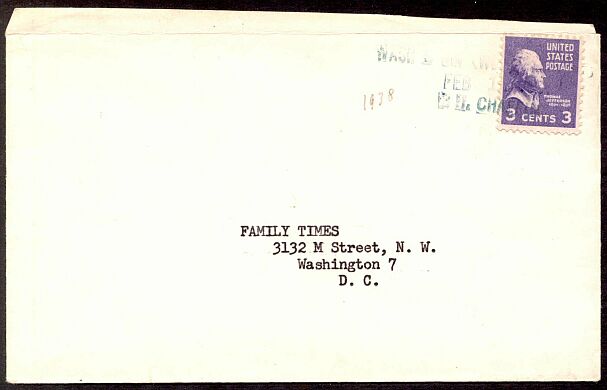
Postal regulations required that mail carried and delivered outside the U.S. mail system must have the proper postage affixed and cancelled. The stamp on this cover was cancelled by a clerk for the Nashville & Cincinnati Railroad.
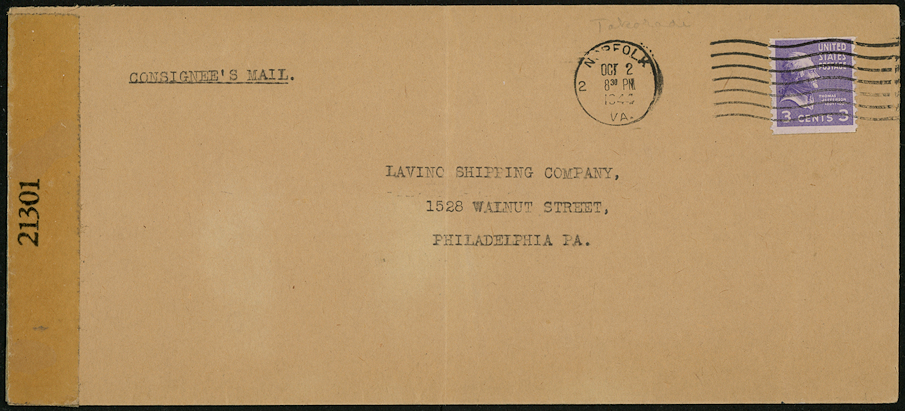
This cover was handed to U.S. Customs from some unspecified source in 1940. From the only handstamp on back, Customs examined it and passed it on to be censored. It entered the mails in Norfolk, where the three cent stamp was added and cancelled.
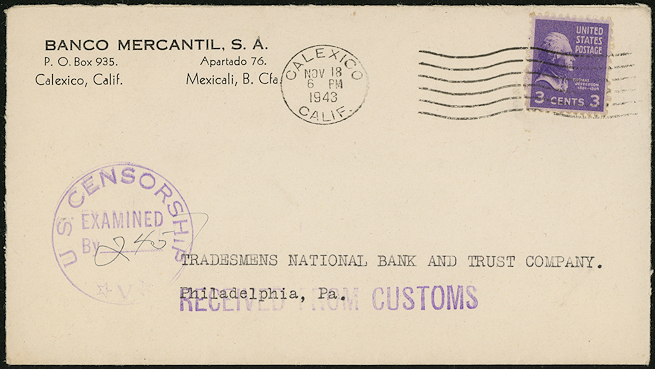
Another cover handed to customs, in this case at Calexico on the California-Mexico border. Customs examined and passed it, but it still received civil censorship in Los Angeles.
